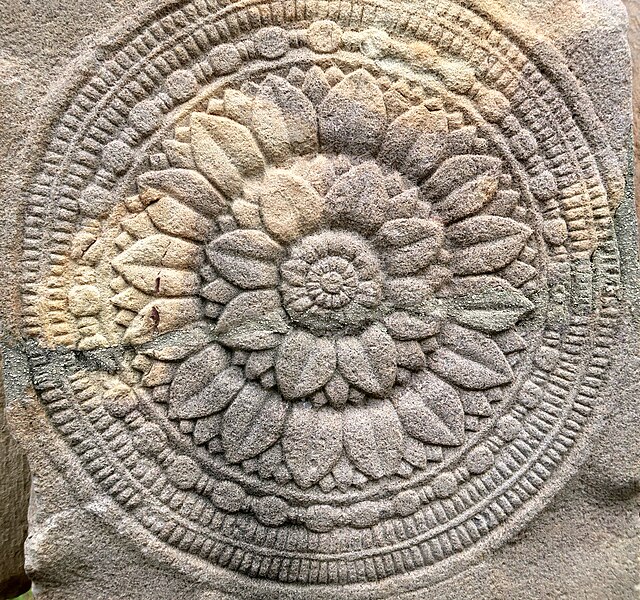Buddhist symbolism is the use of symbols to represent certain aspects of the Buddha's Dharma (teaching). Early Buddhist symbols which remain important today include the Dharma wheel, the Indian lotus, the three jewels and the Bodhi tree.
Lotus motif from Sanchi complex
An "Indra Post" at Sanchi
A Dharmachakra being revered
Pinnacles from Bharhut depicting Dharmawheels and Lotus roundels
Buddhist art is visual art produced in the context of Buddhism. It includes depictions of Gautama Buddha and other Buddhas and bodhisattvas, notable Buddhist figures both historical and mythical, narrative scenes from their lives, mandalas, and physical objects associated with Buddhist practice, such as vajras, bells, stupas and Buddhist temple architecture. Buddhist art originated in the north of the Indian subcontinent, in modern India, Pakistan and Afghanistan, with the earliest survivals dating from a few centuries after the historical life of Siddhartha Gautama from the 6th to 5th century BCE.
Representation of the Buddha in the Greco-Buddhist art of Gandhara, 1st century CE
Seated Maitreya sculpture, Kathmandu Valley, Nepal, c. 1250–1350
Thangka of Shakyamuni Buddha, Tibet, c. 18th century
Footprint of the Buddha. 1st century BCE, Gandhara








